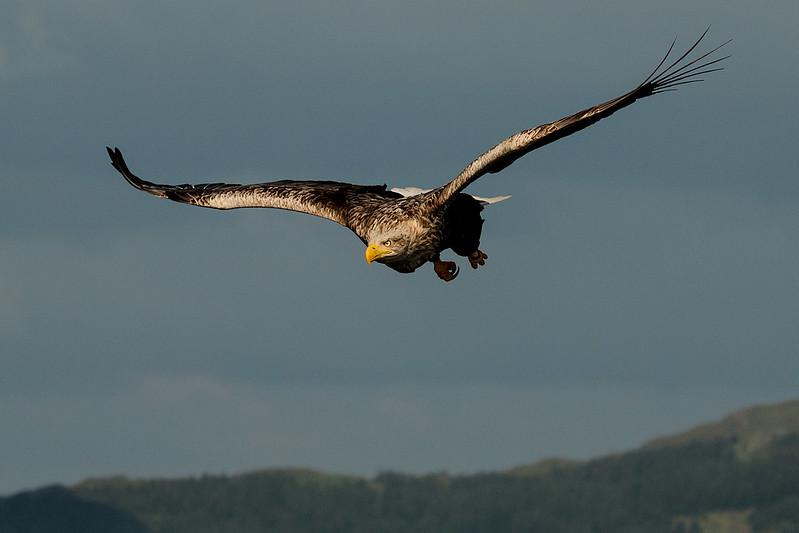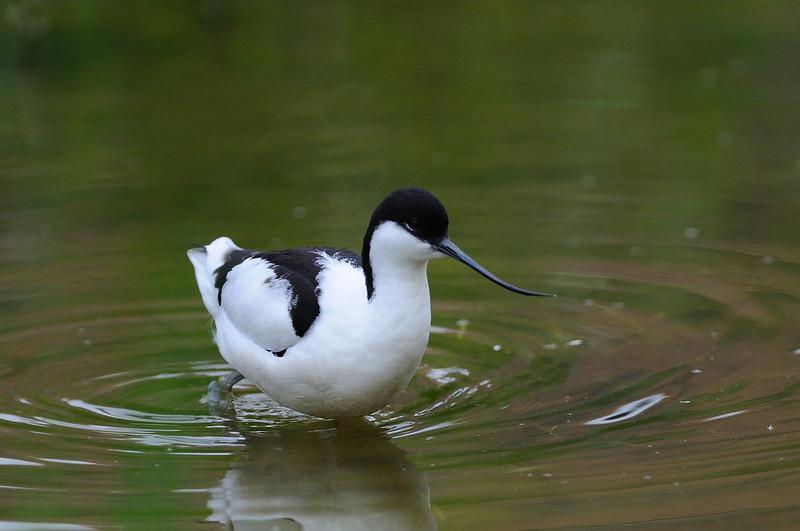Table of Contents
Bittern – Norfolk Broads
A master of camouflage, the Bittern is a handsome bird in the heron family. Tricky to see, these birds only like to give away their positions during the breeding season, when the males make loud booming calls to attract females. Their haunting sounds can travel for over 3 miles on a still day. Bitterns can be found in reedbed habitats, largely in southern parts of England and Wales. For the best opportunities to hear this incredible bird, settle into a bird hide in a secluded part of the Norfolk Broads.
Red Deer – Loch Long
Red Deer are largely associated with northerly parts of the UK, being especially common in Scotland, where they can be seen roaming the glens. Another species known for its vocal prowess during the breeding season, the Red Deer’s roars often echo across the landscape during autumn. This behaviour occurs during the rut, where males use their huge antlers to fight amongst each other for supremacy. One of the best places to see Red Deer is the spectacular Loch Long, in Argyle and Bute.
White-Tailed Eagle – Ardnamurchan
A giant of the skies, the White-Tailed Eagle can boast a wingspan of over 2 metres and is the largest bird found in the UK. Also known as the Sea Eagle, the species has a close relationship with the coast and feeds largely on fish. Once hunted to extinction in the British Isles, the White-Tailed Eagle has since made a comeback, with the remote landscapes of western Scotland being a particular stronghold. If you want to see one in all its glory, your best bet is to head for the Ardnamurchan Peninsula.

Otter – Nansmellyn Marsh
The Otter is a mammal which thrives both in the water and out. A famously elusive species, these animals prefer to live in secluded rivers or estuaries, where they glide through their aquatic habitats on the hunt for fish and invertebrates. They have many adaptations to their environment, with webbed feet, dense fur for warmth and the ability to close their ears and nose underwater. Otters can be found throughout the UK, but one of the most reliable places to see them is Nansmellyn Marsh, in Cornwall.
Puffin – Bempton Cliffs
Sometimes known as the ‘sea parrot’ or the ‘clowns of the ocean’, the Puffin is one of the most colourful seabirds found on the UK’s shores. Their beaks are purely for show, with the brightest being seen as the most attractive among the Puffin community. Puffins can be found in many parts of the UK but their favourite places are tall cliffs on remote headlands. For the best chances to see these charismatic birds, take a stroll along Bempton Cliffs, in Yorkshire.
Grey Seals – Marloes Peninsula
One of the icons of the British coast, the Grey Seal can often be seen bobbing its head above the water just offshore. Being very curious creatures, they’re often very interested to know what’s happening on land. Over 40% of the world’s population can be found in the UK, where they make the most of the many secluded bays and sandflats that scatter the coast. In the winter, huge numbers of Grey Seals hall out onto beaches to give birth to fluffy white pups. One of the best places to see this happen is Marloes Peninsula, in south-west Wales.
Bottlenose Dolphins – Cardigan Bay
Another of the UK’s marine mammal species, the Bottlenose Dolphin is well-known for being a playful inhabitant of the ocean. Often seen surfing the waves or having fun in the wash of passing boats, Bottlenose Dolphins are visitors to only a select few spots on the UK coast. If you want to see these marine mammals for yourself, it’s a good idea to head for Cardigan Bay, Wales – home to Britain’s largest Bottlenose Dolphin population.
Avocet – Minsmere
As a species which once went extinct in the UK, the Avocet is one of the best examples of a conservation success story. Now found in marshes and estuaries in eastern and southern England, Avocets are beautiful wading birds with smart black and white plumage. They feed on aquatic worms and other invertebrates, which they catch by sweeping their beaks back and forth through the water. A good place to look for Avocets is the wildlife paradise that is Minsmere Nature Reserve, on the Suffolk coast.

Red Squirrel – Loch Linnhe
A much rarer species than their larger grey cousins, Red Squirrels are a prime feature of coniferous woodland – their favourite habitat. With their charming faces and fluffy ear tufts, they’re a much-loved species in the UK and are most often seen leaping between tree branches or scurrying around on the ground, searching for nuts. A species which has declined in recent years, the Red Squirrel is predominantly found in certain parts of Scotland and northern England. One of the best places to find them is the shores of Loch Linnhe.
Natterjack Toads – Point Of Ayr
The Natterjack Toad is a species of amphibian with a love for the beach, most commonly found in vegetated areas of sand dunes. A rare animal, these toads can be quite tricky to spot, and are more often heard than seen. On warm summer nights, Natterjack Toads gather together to look for mates, with the males producing incredibly loud calls to try and impress females. These calls can travel as far as a mile and can be quite an experience to hear. A great spot to hear Natterjack Toads is the sands at Point of Ayr, in North Wales.
